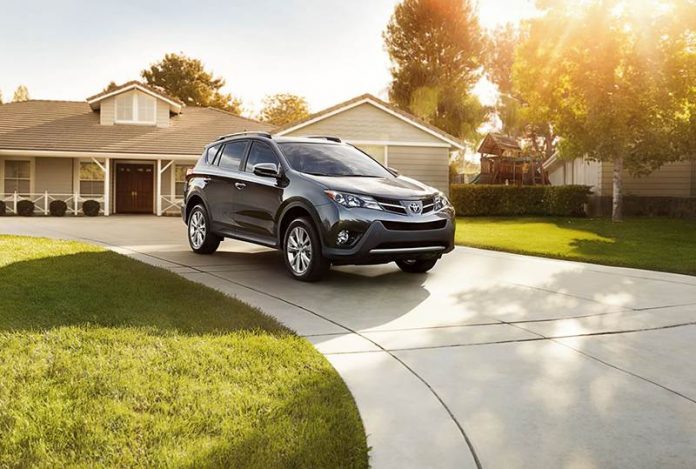COVID-19 changed everything, including how we shop. As a result, many industries have had to embrace online shopping. According to the National Library for Medicine, global retail e-commerce grew 26.4% to $4.248 trillion in 2020. It’s estimated that e-commerce accounted for 20.3% of sales in 2022.
A 2020 Digitization of End-to-End Retail report by Cox Automotive showed the automotive industry took a similar trajectory. Seventy-four percent of franchise dealers said their customers had used digital retailing tools more since the pandemic.
Shopping patterns driven by safety concerns, increased technological advances, and ever-changing consumer preferences have led to digital e-commerce sticking around.
The rise of virtual tours and digital retailing
Customers have gotten a taste of online-only shopping processes, and it seems they don’t want them to cease. According to market research store, Research and Markets, the global automotive AR and VR market is expected to have a 79.5% compound annual growth rate (CAGR) by 2026.
Immersive technologies like AR and VR allow customers to experience and explore products digitally. A customer can sit inside a vehicle and look at the interface while exploring a showroom at home.
This, coupled with an online-only sales platform, can help you reach and keep customers and increase customer satisfaction. Through research, Cox Automotive found that 81% of consumers want to do at least part of the car purchasing process online.
Offering online-only sales opportunities can:
- Expand customer reach – You can increase your dealership’s reach and entice individuals further out to interact with your dealership.
- Increase convenience – For individuals with schedule restraints due to childcare or work; this approach gives them an easier way to purchase from you.
- Reduced physical interaction – Lingering concerns about the COVID-19 pandemic could keep individuals from entering public places. Online-only sales platforms allow them to get the service they need.
Growing consumer preference for contactless interactions
Customers desire an online-only contactless process. A 2020 report by Cox Automotive found that 76% of shoppers are open to buying a car completely online.
Consumers are particularly interested in managing the pricing and paperwork process. For example, the percentage of individuals who wanted to either finalize a vehicle price or review and sign a final contract at home increased by 13% and 11%, respectively, between 2017 and 2020, according to Cox Automotive.
Contactless and online customer processes offer a variety of benefits for your dealership and the customers you serve. Not only do they increase safety, but they fulfill a significant desire by customers: saving time. Cox’s Automotive Digitization report found fewer individuals wanted to take their time at the dealership.
In fact, there was a 42-minute difference in time spent at the dealership for individuals who handled much of the purchasing process online versus those who didn’t. Also, customer satisfaction with dealers who used digital retailing tools for car buying stood at 72%.
The significance of curbside pickup
Curbside pickup can be a win-win for your dealership and customers. In 2022, one-third of US online shoppers made their most recent purchase for curbside pickup, a 37% increase from the previous year.
Curbside pickup increases convenience for consumers, decreases the amount of contact, and is less taxing than vehicle delivery for auto dealers.
However, to pull this off effectively, dealers must provide clear communication about logistics, efficient and hassle-free scheduling, and sales team members who can provide personalized services.
Steps to improve digital retailing customer service
Data shows that digital retailing can positively and significantly impact customer service. But it’s more than just offering an online experience, including virtual tours and curbside pickup. There are some tangible ways you can ensure digital retailing improves customer service:
Establish effective communication channels – You can use digital tools to your benefit to communicate effectively with customers and meet them where they are. A great example of this is using a chatbot. Tidio, a customer experience solution company, found that 62% of customers would rather speak with a chatbot than wait for a human customer service agent. Whether you’re interacting with customers on Twitter, Instagram, or through an online chatbot, you want to ensure a streamlined process for communicating and responding to customers and letting individuals know that these channels are an option.
Respond promptly – Customer response expectations vary by channel. According to social media management company Sprout Social, 76% of individuals expected a company to respond to their inquiries on social media in under 24 hours. On the other hand, the average response times for live chat are 2 minutes, according to customer relationship management company SuperOffice data. Consider these benchmarks as you set up your digital retailing communication strategy.
Offer personalized interactions – Not only do people want rapid responses, but they want customized information. Ensure you use customer (demographic and purchase) data to create dynamic, personalized experiences. This particularly comes into play during email campaigns and ad retargeting.
Be prepared for the new normal
Customers are ready for digital retailing experiences, partly due to the disruption by COVID-19 and technological advancements.
As a result, you and your dealership team can meet these new customer preferences by adopting digital tools, heavily investing in employee training to use these tools, and routinely auditing your online presence and digital retailing strategies.
Leaning into digital retailing can be a win-win for customers and your dealership.



